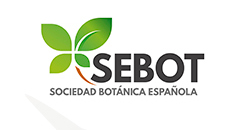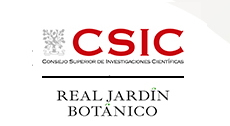Scientific Area
Photographic field guide to the common grasses of Madagascar
ID: 613 / 418
Category: Abstract
Track: Pending
Proposed Symposium Title: Photographic field guide to the common grasses of Madagascar
Authors:
Rafael Felipe de Almeida1, Nantenaina Rakotomalala2, Fenitra Randrianarimanana2, Lorna MacKinnon1, David Rabehevitra2, Francois Rousseu3, Lucien Rakotonirina2, Dina Miarinjanahary4, Nirintsoa Landry Raharinirina2, Mamy Tiana Rajaonah2, Tiana Randriamboavonjy2, Livasoa Randriamanalina2, Cédrique Solofondranohatra5, Mijoro Rakotoarinivo6, Olinirina Nanjarisoa2, Jean Augustin Randriamampianina7, Botovao Auguste Ramiandrisoa8, Maria S. Vorontsova 1
Affiliations: 1 Royal Botanic Gardens, Kew, United Kingdom 2 Kew Madagascar Conservation Centre, Antananarivo, Madagascar 3 University of Sherbrooke, Canada 4 Missouri Botanical Garden, Madagascar 5 Madagascar Biodiversity Centre, Madagascar 6 University of Antananarivo, Madagascar 7 FOFIFA/CENRADERU, Madagascar 8 University of Mahajanga, Madagascar
Abstract:
The grasses and grassy ecosystems of Madagascar have been the focus of Kew’s multidisciplinary research, conservation, and development work since 2011, including taxonomic, phylogenetic, ecological and agricultural projects. Madagascar is home to an estimated 38 million hectares of grasslands comprising 146 genera and ca. 590 Poaceae species, of which ca. 220 are endemic to this island. Unfortunately, the lack of specialist expertise and resources has led to a lack of recognition and a failure to utilise this diversity. Madagascar’s first colour picture guide to grass genera was printed by Kew in 2018. Field photography of grasses has always been challenging due to their small reproductive organs while living grasses are not easy to recognise from traditional line drawings of spikelets. Using specialist photography training and multiple photographer contributions, we are creating the first photographic guide to species to create a foundational resource for identifying, managing, and using common grasses, making native and endemic forages better known and more valued by the Malagasy people. This bilingual book in English and Malagasy will include 127 genera and 300 species of common and economically significant grass species. Photographs were taken on field trips from 2011 to the present. Ethnobotanical data are gathered from literature as well as smallholder interviews. Morphological traits, distribution, ecology and economic uses are compiled from GrassBase, project datasets and partner organisations. Field photographs are being edited using Photoshop software, focusing on habits, leaves, spikelets, and caryopses as a rich visual resource for diverse audiences.




